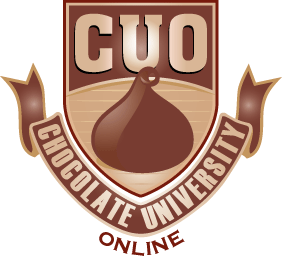Chocolate is Healthy!
Chocolate is Healthy!
Chocolate is Healthy is a non-fiction book encompassing both the health and food genres teaching the audience about debunking myths and fallacies regarding chocolate and introducing them to the wonders of what chocolate can do for them. Each of the myths, fallacies and health benefits will be discussed in detail and each of these facts will be backed with up information from major studies. There will also be a final chapter on what chocolate is doing to the health of the environment and what some of the world’s finest chocolatiers are doing to help. Also incorporated in Chocolate is Healthy! is a compilation of approximately thirty dark chocolate recipes and photos to salivate over and to work into their lifestyle.Chocolate is Healthy is a non-fiction book encompassing both the health and food genres teaching the audience about debunking myths and fallacies regarding chocolate and introducing them to the wonders of what chocolate can do for them. Each of the myths, fallacies and health benefits will be discussed in detail and each of these facts will be backed with up information from major studies. There will also be a final chapter on what chocolate is doing to the health of the environment and what some of the world’s finest chocolatiers are doing to help. Also incorporated in Chocolate is Healthy! is a compilation of approximately thirty dark chocolate recipes and photos to salivate over and to work into their lifestyle.
Price:
Categories: chocolate products Tags: approximately, chapter, CHOCOLATE, health benefits, healthy, introducing
Why Chocolate Is Associated With Acne
A study done at the Radboud University Nijmegen Medical Center in the Netherlands, involved collection of blood samples from seven participants before and after consuming exactly 48 g of chocolate on a daily basis. This was done consecutively for four days.
The chocolate that was eaten had approximately 30% cocoa. The blood cells collected were exposed to bacteria called Propionibacterium acnes.
These bacteria are supposedly a contributory factor for developing acne when they grow inside clogged pores. When such takes place, the pores become inflamed. It then ends up in the growth of Staphylococcus aureus, another type of skin bacteria that could worsen acne.
The blood cells created more interleukin-1b after the participants had chocolate. Interleukin-1b is described as a marker of immune system inflammation when they were exposed to Propionibacterium acnes.
The scientists claimed that these findings indicated that eating chocolate may boost the inflammation which can contribute to acne. Chocolate eating also gave a boost to production of another immune system factor, known as interleukin 10, after having been exposed to Staphylococcus aureus, according to a report at MyHealthNewsDaily.
Interleukin 10 supposedly lowers the immunity against microorganisms. That said, higher levels of interleukin 10 may lead to conditions that would allow bacteria to infect pimples, and aggravate them, said the researchers.
In spite of the many talks about chocolate and some other foods that are associated with acne, little is known as evidence to display they actually cause acne, said Dr. Kanade Shinkai, a dermatologist at the University of California, San Francisco School of Medicine, who has acne treatments as specialty.
Nevertheless, past studies have shown that high-glycemic foods, such as white bread, could be linked to acne. This is because they release sugar into the bloodstream quickly. While the acne problems of some people are impacted by diet, others’ acne issues are not influenced by diet at all.
This research was published in the journal Cytokine.
Categories: chocolate articles Tags: Acne, approximately, bacteria, CHOCOLATE, chocolate science, done, system
M&M-colored Honey
When a baby is just born, he or she only see shades of black and white, or so they say. As the little bundle of joy grows bigger, it gets attracted to more vibrant hues. When schooling starts, one of the most important lessons taught to him or her is the different colors.
This only displays how important color is in our lives. The same thing goes for food. The more variety of colors there is, the more it is pleasing to the eyes, more appealing. That is the reason why a lot of food manufacturing companies maximize this phenomenon. This is especially true with the candy brands.
Imagine how successful the use of color has been for M&M’s. They don’t just cater to the children, but also those who are young at heart.
You can enjoy those tiny bits of color coated chocolates right into your mouth. You can grab a random handful or choose specific colors, your call, but turns out that these colorful treats are not seen as pleasing to the beekeepers of France.
France is the largest producer and supplier of honey in all of Europe. Annually, it is estimated that they generate around 18,330 tons of honey. Sweet, eh?
Based on the Alsace chamber of agriculture, there are roughly 2,400 beekeepers in their specific region that tends 35,000 colonies, producing approximately 1,000 tons of honey a year.
August of last year, about a dozen or so of the Alsace area beekeepers began to notice that the honey produced by their bees became bluish and greenish!
Following an investigation, they discovered that is was because of a biogas plant of an M&M factory located around the area. The bees have been eating the residues and this contributed to the colorful end result of their honey.
According to Alain Frieh who is the president of the Apiculturists’ Union, this situation is actually a problem. Despite the attractive look and the honey-like taste, the product is not salable.
What a bummer, right? Perhaps they should add more color and ship it to the U.S. Strangely-colored ketchup was all the rage a few years ago, neon-blue honey sounds just as good!
Categories: chocolate articles Tags: Apiculturists’ Union, approximately, bees, colors, despite, France, Honey, M&M's






